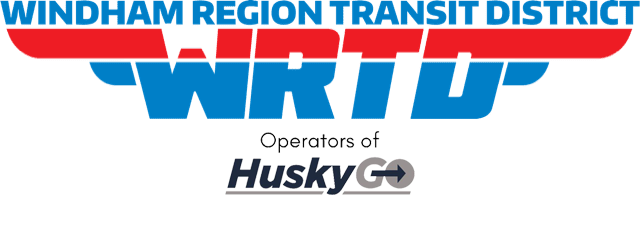Free on Board FOB Export and Import: Incoterms 2020

With a CIF agreement, the seller pays costs and assumes liability until the goods reach the port of destination chosen by the buyer. Imagine the same situation above, except the agreement terms are for FOB destination. Instead, the manufacturer retains ownership of the equipment until it’s delivered to the buyer. Both parties don’t record the sale transaction in their general ledgers until the goods arrive at the buyer’s location.
- In FOB shipping point agreements, the seller pays all transportation costs and fees to get the goods to the port of origin.
- These terms are used to standardize shipping and freight contracts and avoid lengthy negotiations by expressing contractual obligations in simple phrases.
- If any issues arise during shipping, the seller handles resolving them and may need to replace or refund the damaged goods.
- With FOB Shipping Point, the buyer is responsible for the shipping costs and any damages that may occur during transport.
- In other words, FOB Shipping Point means the seller is responsible for loading the goods onto the shipping carrier and bears the cost and risk of transporting those goods until they are loaded onto said carrier.
Using FOB in Shipping Contracts
Our goal is to deliver the most understandable and comprehensive explanations of financial topics using simple writing complemented by helpful graphics and animation videos. At Finance Strategists, we partner with financial experts to ensure the accuracy of our financial content. For information pertaining to the registration status of 11 Financial, please contact the state securities regulators for those states in which 11 Financial maintains a registration filing. Finance Strategists has an advertising relationship with some of the companies included on this website.

Who pays for shipping in FOB shipping point?
FOB Shipping Point typically results in lower shipping costs for the seller since they are only responsible for transporting the goods to the carrier. However, FOB Destination can be more expensive for the seller since they are responsible for all transportation costs up until the goods are delivered to the buyer’s location. CIF (Cost, Insurance, and Freight) and FOB (Free on Board) are two widely used Incoterm agreements.
- In FOB Destination Point agreements, buyers often feel they’re in a passenger seat.
- We may earn a commission when you click on a link or make a purchase through the links on our site.
- Be explicit in your communications, especially regarding freight charges and when ownership passes between buyer and seller.
- Clearly understanding these responsibilities enables a smooth transition between the parties at the handover point and avoids misunderstandings.
- Its advanced algorithm maximizes efficiency and cost-savings in your supply chain.
What are the Buyers Responsibilities?
Be sure to ask your forwarder if they can communicate with the supplier or prefer you to organize all communication. In contrast, we recognize that having our team in China means we can better coordinate directly with suppliers and be prepared to react in the event of any delays or issues before the shipping day. If you are shipping a full container load (FCL), the truck will carry the container to the seller’s warehouse, and the seller will load the cargo directly into the container.
We also break down demurrage vs. detention fees in supply chain container shipping here. There’s a lot to keep track of in the world of logistics and supply chain management—from sourcing raw materials to delivering complete products and everything in between. And with globalization, the number of partners involved in these processes has only increased.

Types of FOB Contracts
Free on Board shipping is further broken down into either FOB Destination or FOB Shipping Point, which essentially determines who foots the majority of the transportation bill – the buyer or the seller. Real-time driver tracking, customer notifications, proof of delivery, and seamless integration with existing systems make Upper a comprehensive solution. So, try Upper’s 7 days free trial and experience a faster, more reliable, and cost-effective movement of goods across your logistics operations. Goods in FOB shipping point are owned by the buyer once loaded onto the freight carrier at the origin point. From selecting the carrier to deciding on the shipping route, buyers have the control and flexibility to make strategic choices that align with their business needs. Specifically, FOB shipping point indicates that the buyer assumes responsibility the moment goods are loaded for departure.
How to Calculate Net Sales: An Easy Guide to Calculating Your Business’s Profits
FOB shipping point means you choose your delivery method, which can lower costs, or you can avoid liability, even though you’ll likely pay more, with FOB destination. The point at which the goods’ ownership transfers and related shipping costs also affect your cost of goods sold (COGS). A buyer can save money by using FOB Destination since the seller assumes costs and liability for the transportation.

- FOB specifies the point of ownership transfer, while delivery involves goods reaching the buyer’s destination.
- The two major FOB types are FOB shipping point and FOB destination, which we’ll discuss in depth below.
- FOB terms are typically included in shipping orders and contracts, detailing the time and place of delivery, payment terms, and which party handles freight costs and insurance.
- Once your cargo loads onto the forwarder’s truck, it will begin its journey to the port.
The manufacturer records the sale at the shipping point, at which time they also make an entry for accounts receivable and reduce their inventory balance. Incoterms define the international shipping rules that delegate the responsibility of buyers and sellers. Shipping terms affect the buyer’s fob shipping point inventory cost because inventory costs include all costs to prepare the inventory for sale. This accounting treatment is important because adding costs to inventory means the buyer doesn’t immediately expense the costs, and this delay in recognizing the cost as an expense affects net income.

FOB shipping point, freight prepaid and charged back
Furthermore, once the goods leave the port of origin, the seller has limited control over the shipment and may face delays during transit. This can raise questions about their ability to meet delivery deadlines and is a significant risk for FOB Destination transactions. Sellers should have contingency plans to manage potential delays and communicate effectively with buyers in such situations. FOB shipping point holds the seller liable for the goods until they’re transported to the customer, while FOB destination holds the seller liable for the goods until they have reached the customer.















